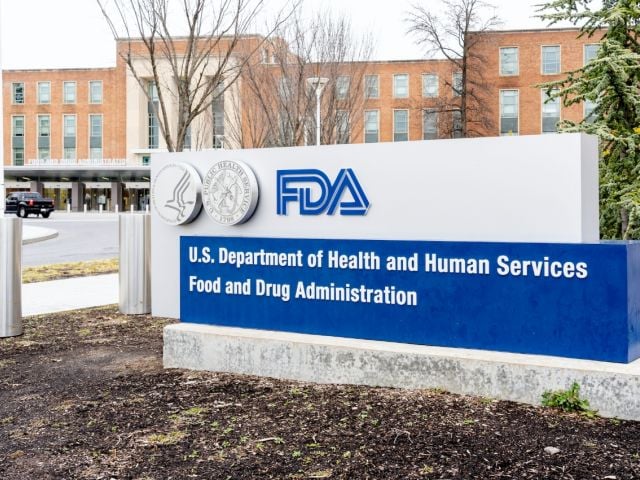WASHINGTON –- In the wake of an FDA advisory panel’s devastating rebuke of the agency’s safety assessment for the toxic plastics chemical bisphenol A (BPA) Environmental Working Group (EWG) has written North America’s leading infant formula manufacturers and canned food producers urging them to take immediate steps to remove BPA from canned infant formula and other canned foods.
BPA, discovered in the 1930’s to be a synthetic estrogen, is a component of plastic resins that leach from can linings into food.
“Liquid formula is the biggest culprit in exposing infants to a toxic hormone-disrupting chemical, but kid-friendly foods like canned chicken noodle soup and ravioli also have high levels of BPA,” said EWG Senior Analyst Sonya Lunder. “BPA was initially used as a sex hormone. It should never have been allowed to come into contact with infant formula.”
“The evidence is overwhelming that FDA has been the industry’s lapdog,” Lunder said. “Manufacturers must immediately repackage formula and canned food to remove this chemical, shown by many studies to cause brain and reproductive system damage in crucial stages of development.”
A 2007 Environmental Working Group survey of the four leading makers of liquid formula sold in North America found that all used BPA-based epoxy resin coating to line their formula cans. These included Nestlé (Good Start), Ross-Abbot (Similac and Isomil), MeadJohnson (Enfamil), and PBM (maker of store-brand formulas sold at Target, Kroger and dozens of other retailers).
An EWG research report, Toxic Plastics Chemical in Infant Formula, concluded that infants fed exclusively on canned ready-to-eat formula are exposed to unsafe levels of BPA and that one in 16 babies on liquid formula are exposed to doses exceeding those that caused damage in laboratory animals.
EWG found that infants fed liquid formula, which can make up their total diet for the first six months of life, suffered the greatest exposures to the toxin. EWG calculations show that babies should not be fed liquid formula sold in metal cans. Powdered formula or liquid types sold in plastic containers are BPA-free options.
In a second study, also in 2007, EWG laboratory tests found BPA in 20 out of 28 brands of canned food, amounting to more than half of the cans of foods tested. One to three servings per day of foods found to be highly contaminated, including chicken soup and ravioli, could expose an infant, child or a pregnant woman to BPA at levels that have caused serious harm in animal studies.
Food brands found to contain BPA were B&M, Bush’s Best, Campbell's Condensed (soup), Campbell’s Chunky, Campbell’s SpaghettiOs, Chef Boyardee, Chicken of the Sea, Coca-Cola, Del Monte, Dole, Ensure, Green Giant, Kroger store brand, Libby’s, Nestle Carnation, Pepsi-Cola, Progresso, S&W, Slim-Fast, Swanson and Wolfgang Puck.
In a strongly worded report released Tuesday, the FDA Science Board’s BPA subcommittee concluded that an internal FDA assessment of BPA contained a number of serious scientific flaws and significantly underestimated the health risks of BPA.
Much of the scientific research on BPA has focused on damage to the developing brains and bodies of fetuses and infants, but some recent studies have linked the toxin to diabetes and heart disease in adults. Earlier this week, a new study published by Environmental Health Perspectives found that BPA rendered breast cancer cells resistant to chemotherapy treatment.
EWG’s analysis of the FDA Science Board BPA subcommittee report and its concerns about BPA contamination of infant formula can be found on the front page of our website.
NOTE: Text of the letters from EWG president Ken Cook to the CEOs of major food companies and infant formula manufacturers are below. The individual, signed copies will be available online soon.
###
EWG is a nonprofit research organization based in Washington, DC that uses the power of information to protect human health and the environment.
Letter sent to executives at the following infant formula manufacturers:
Mead-Johnson & Company and Ross-Abbott
NOTE: A similar letter was sent to executives at Nestlé and PBM, because BPA was detected in their products by Canadian tests.
October 31, 2008
Re: Bisphenol A contamination detected in your canned foods
In September the National Toxicology Program raised concerns that exposure to bisphenol A (BPA) during pregnancy and childhood may harm the development of the brain and prostate and cause behavioral problems in children (NTP 2008). Babies fed liquid formula from BPA-lined cans get the most intense exposure of any age group.
We are writing to ask that you immediately phase out the use of BPA in your product line and transition to safe alternatives.
Environmental Working Group, the FDA and Health Canada tests have all detected BPA in your liquid formula (EWG 2007, Biles 1996, Cao 2008). Our calculations suggest that babies fed liquid formula receive unsafe levels of BPA, possibly throughout their first six months of life.
The federal Food and Drug Administration’s advisory panel concurs with our assessment. They recently reviewed the Agency’s draft risk assessment for BPA in food packaging and concluded there were serious shortcomings with the Agency’s internal assessment, particularly intake estimates for formula-fed babies (BPA Subcommittee 2008). The Subcommittee said that the FDA staff had left an “inadequate” margin of safety for current exposures, meaning that the FDA cannot prove that current BPA exposures are safe.
The FDA takes the position that human exposures to food impurities should be at least 1,000 times less than the doses found toxic in laboratory studies. As the FDA addresses the advisory panel’s critique, we expect that the Agency will determine that food packaged in cans lined with BPA-based epoxy lacquer cannot be deemed safe for human consumption. Ultimately, we are confident that the FDA will issue regulations strictly limiting the use of BPA in food packaging.
However, in the interim, we ask that you and other food manufacturers take immediate steps to adopt packaging that contains no BPA. Consumers want to buy products from companies they trust to produce safe and healthful products. We hope you will join the growing list of companies offering products that can be trusted to be free of BPA.
We are advising our audience, totaling as many as 1 million readers monthly, that choosing powdered formula or liquid types packaged in non-metal cans will dramatically reduce babies’ exposures to BPA. The Canadian government has announced immediate measures to reduce infant exposures to BPA in formula. Given that you supply formula in both countries it is unconscionable to provide poorer quality products to American families than to Canadian families.
Concerned consumers and parents, in particular, have responded strongly to non-BPA options for baby bottles, sippy cups and pacifiers. We urge you to respond to these consumer preferences by helping to lead the formula industry to safer, BPA-free products.
Sincerely,
Ken Cook
President
Environmental Working Group
CC: Infant Formula Council
References:
Biles JE, McNeal TP, Begley TH. 1997. FDA-Determination of Bisphenol A Migrating From Epoxy Can Coatings to Infant Formula Liquid Concentrates. J Agric Food Chem 45: 4697-700.
BPA subcommittee. 2008. Scientific Peer-Review of the Draft Assessment of Bisphenol A for Use in Food Contact Applications. FDA Science Board Subcommittee on Bisphenol A. Draft. October 31, 2008 http://www.fda.gov/ohrms/dockets/ac/08/briefing/2008-4386b1-05.pdf
Cao XL, Dufresne G, Belisle S, Clement G, Falicki M, Beraldin F, Rulibikiye A. 2008. Levels of bisphenol A in canned liquid infant formula products in Canada and
dietary intake estimates. J Agric Food Chem. Sep 10;56(17):7919-24. Epub Aug 15
2008.
Environmental Working Group. 2007. Bisphenol A: Toxic Plastics Chemical in Canned Food. https://www.ewg.org/reports/bisphenola
National Toxicology Program (NTP). 2008. NTP-CERHR Monograph on Bisphenol A. Research Triangle Park, NC. http://cerhr.niehs.nih.gov/chemicals/bisphenol/bisphenol.html, 10/30/08.
Text of the letter sent to executives at the following canned food companies:
General Mills, PepsiCo, Wolfgang Puck, Campbell’s, ConAgra Foods, Dole, The Kroger Co., Del Monte, Thai Union Group, Bush Brothers, B&G Foods and Coca-Cola
October 31, 2008
Re: Bisphenol A contamination detected in your canned foods
In recent weeks, the National Toxicology Program, an arm of the National Institutes of Health, and a panel of science advisors to the federal Food and Drug Administration have raised serious concerns about the safety of current human exposures to bisphenol A (BPA), a synthetic sex hormone that extensive laboratory tests have shown to be toxic in even trace amounts. Most Americans are exposed to traces of BPA because the chemical is an integral component of epoxy lacquer used to line most food cans produced for the North American market.
We are writing to ask that you immediately phase out the use of BPA in your product line and transition to safe alternatives.
Environmental Working Group laboratory tests of canned food samples have found detectable BPA in more than half of 97 samples (EWG 2007). Your [brand name] brand foods are among those found to contain BPA. We calculate that a single serving of the 42 foods with detectable BPA exposes an adult or child to unsafe levels of BPA.
The National Toxicology Program has determined that exposure to BPA during pregnancy and childhood may harm the development of the brain and prostate and cause behavioral problems in children (NTP 2008). BPA exposure may also harm adults: recent studies link BPA to heart disease and diabetes and find that BPA interferes with the effectiveness of chemotherapy for breast and prostate cancer (Lang 2008, LaPensee 2008, Wetherill 2006).
The FDA advisory panel on BPA reviewed the Agency staff’s draft risk assessment for food packaging and this week concluded there were serious shortcomings in the Agency’s internal assessment (BPA Subcommittee 2008). The Subcommittee said that the FDA staff had left an “inadequate” margin of safety for current exposures, meaning that the FDA cannot prove that current BPA exposures are safe.
The FDA takes the position that human exposures to food impurities should be at least 1,000 times less than the doses found toxic in laboratory studies. As the FDA addresses the advisory panel’s critique, we expect that the Agency will determine that food packaged in cans lined with BPA-based epoxy lacquer cannot be deemed safe for human consumption. Ultimately, we are confident that the FDA will issue regulations strictly limiting the use of BPA in food packaging.
However, in the interim, we ask that you and other food manufacturers take immediate steps to adopt packaging that contains no BPA. Consumers want to buy products from companies they trust to produce safe and healthful products. We hope you will join the growing list of companies offering products that can be trusted to be free of BPA.
We are advising our audience, totaling as many as 1 million readers monthly, that several alternative food packaging technologies could immediately and dramatically reduce the public’s exposure to BPA contamination in canned foods. Ball Corporation manufactures cans with an olenoresinous (non-BPA) lining that can be used for low-acidity foods and would add just two cents to the price of each can (Demetrakakes 2008). Furthermore, Japanese manufacturers have adopted voluntary standards to reduce BPA levels in canned foods. Two approaches are detailed in an assessment by the Japanese government (Nakanishi 2007). One is to use a PET film to inactivate the BPA-containing epoxy. The other is to use an EXR paint that leaches less BPA.
Concerned consumers and parents, in particular, have responded strongly to non-BPA options for baby bottles, sippy cups and such packaged foods as infant formula. We urge you to respond to these consumer preferences by helping to lead the food industry to safer, BPA-free products.
Sincerely,
Ken Cook
President
Environmental Working Group
Cc: Grocery Manufacturers Association
Metal Packaging Manufacturers’ Association
References:
BPA subcommittee. 2008. Scientific Peer-Review of the Draft Assessment of Bisphenol A for use in Food Contact Applications. FDA Science Board Subcommittee on Bisphenol A. http://www.fda.gov/ohrms/dockets/ac/08/briefing/2008-4386b1-05.pdf
Demetrakakes P. 2008. BPA Continues to Draw Doubts. Food Packaging Insights. Food and Beverage Packaging. September 25, 3008. http://www.foodandbeveragepackaging.com/CDA/Articles/eNewsletter/BNP_GU…
Environmental Working Group. 2007. Bisphenol A: Toxic Plastics Chemical in Canned Food. https://www.ewg.org/reports/bisphenola
Lang IA, Galloway TS, Scarlett A, Henley WE, Depledge M, Wallace RB, Melzer D.
2008. Association of urinary bisphenol A Concentration with Medical Disorders and
Laboratory Abnormalities in Adults. JAMA. 2008 Sep 17;300(11):1303-10. Epub 2008
Sep 16.
LaPensee EW, Tuttle TR, Fox SR, Ben-Jonathan N. 2008. Bisphenol A at Low Nanomolar Doses Confers Chemoresistance in Estrogen Receptor Alpha Positive and Negative Breast Cancer Cells Environ Health Perspect: doi:10.1289/ehp.11788. [Online 8 October 2008] ?http://ehp.niehs.nih.gov/docs/2008/11788/abstract.html
Nakanishi J, Miyamoto K, Kawasaki H. 2007. Bisphenol A Risk Assessment Document. (AIST Risk Assessment Document Series No. 4) November 2007. New Energy and Industrial Technology Development Organization (NEDO), Research Center for Chemical Risk Management (CRM), National Institute of Advanced Industrial Science and Technology (AIST) http://unit.aist.go.jp/riss/crm/mainmenu/BPA_Summary_English.pdf
National Toxicology Program (NTP). 2008. NTP-CERHR Monograph on Bisphenol A. Research Triangle Park, NC. http://cerhr.niehs.nih.gov/chemicals/bisphenol/bisphenol.html, 9/11/08.
Wetherill YB, Hess-Wilson JK, Comstock CE, Shah SA, Buncher CR, Sallans L, Limbach PA, Schwemberger S, Babcock GF, Knudsen KE. 2006. Bisphenol A facilitates Bypass of Androgen Ablation Therapy in Prostate Cancer. Mol Cancer Ther. Dec;5(12):3181-90.



